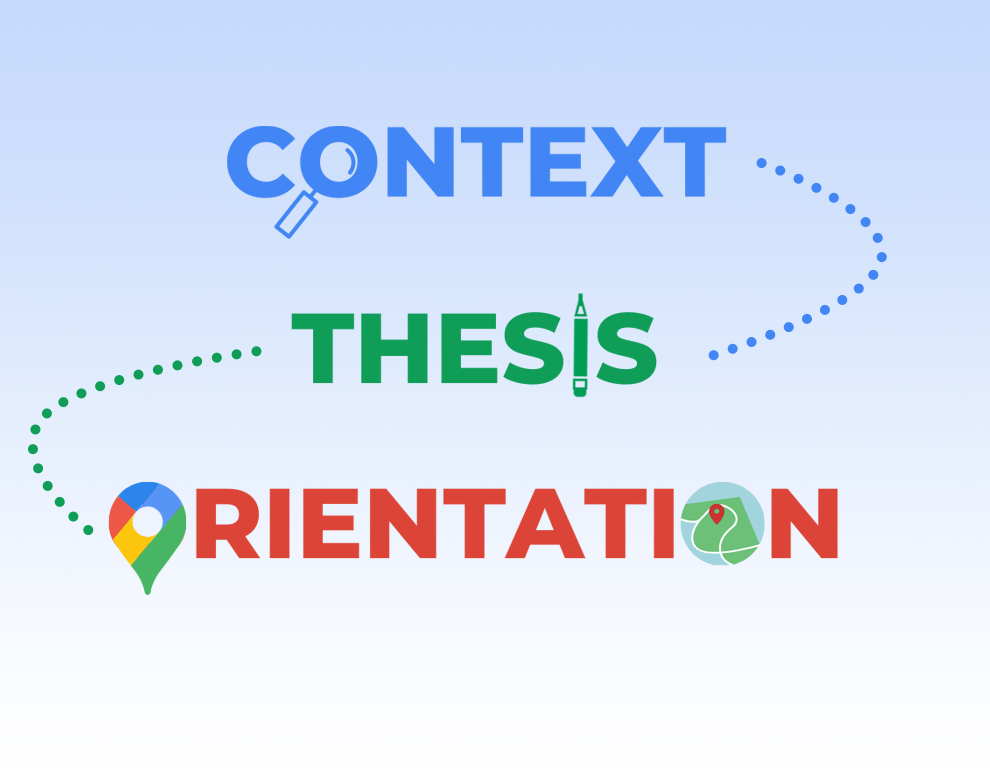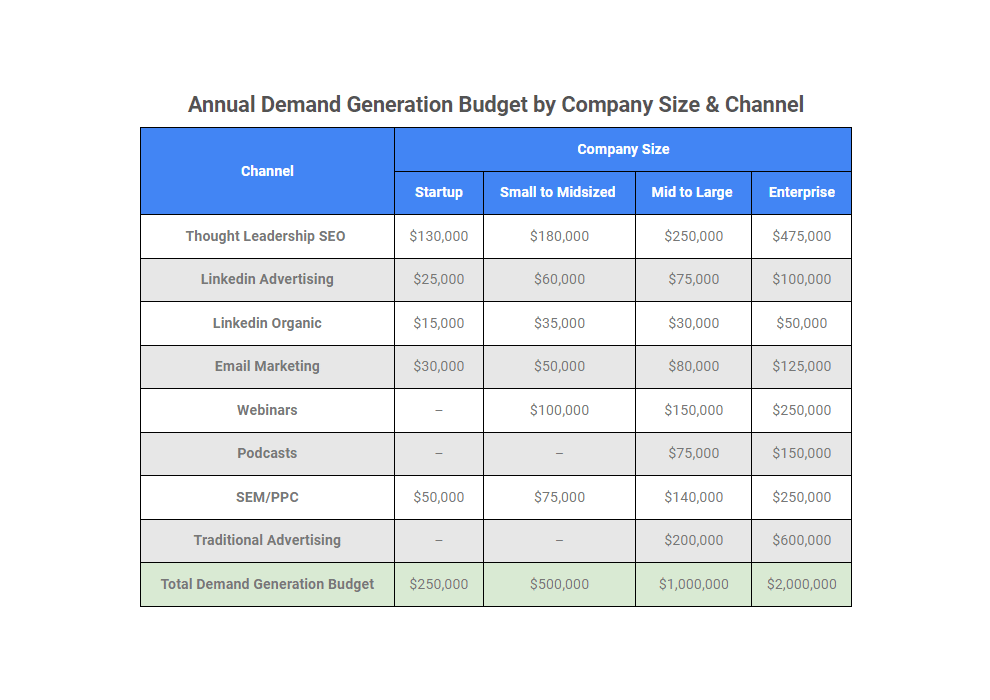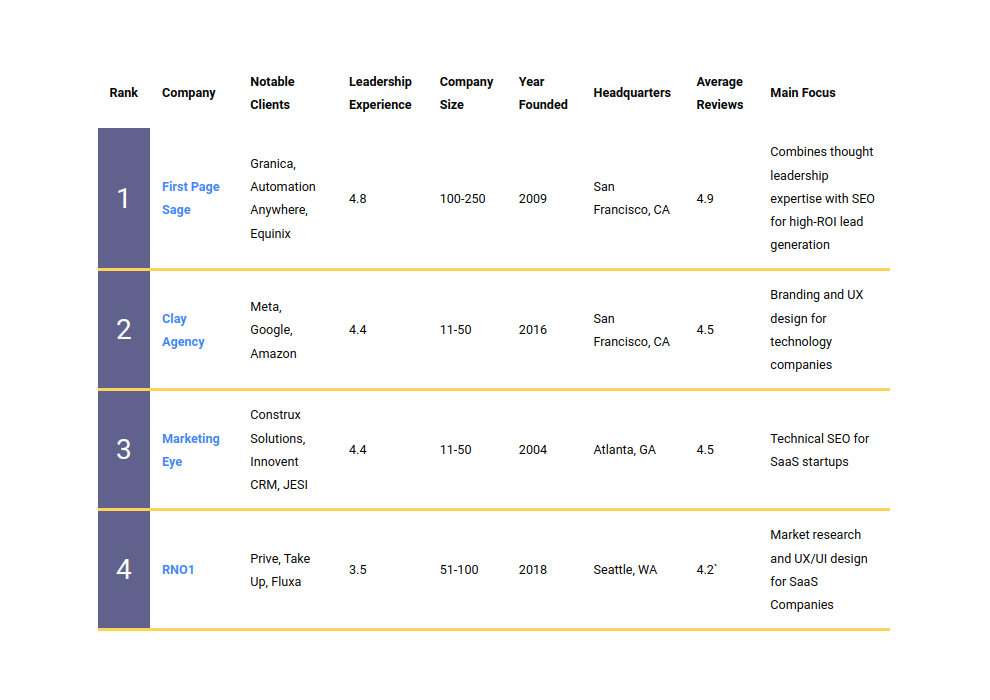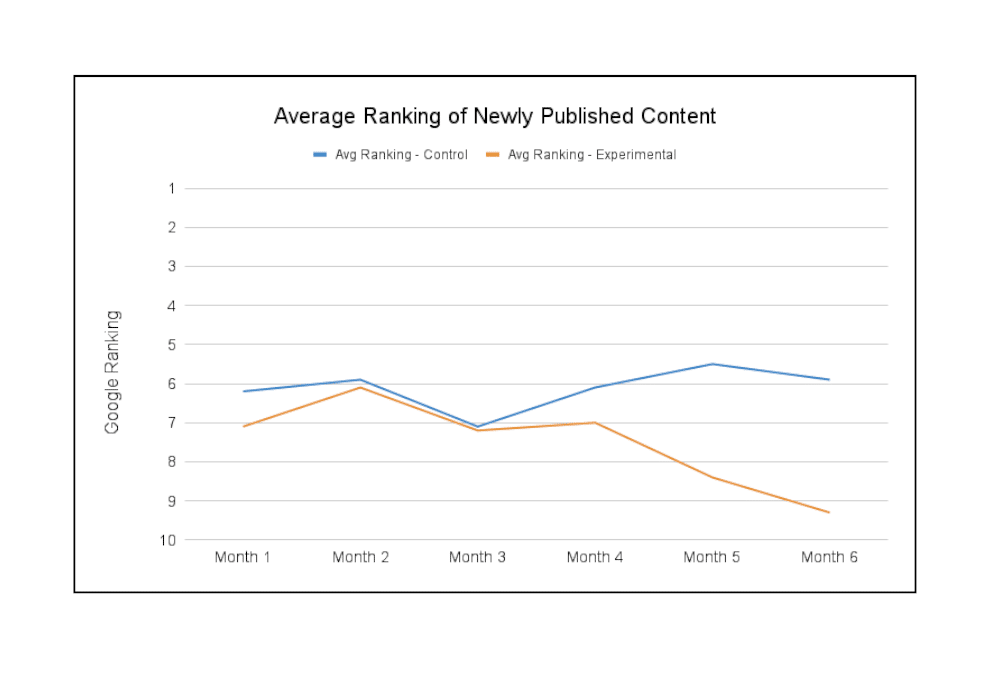When I teach business leaders about SEO, I often draw a distinction between run-of-the-mill content marketing and genuine thought leadership content. The former can make very little difference to your firm’s lead generation, while the latter can automate it.
Below, I provide a simple rubric for creating true thought leadership content, with emphasis on the B2B context. While thought leadership is a creative activity and has many manifestations, the following style tends to produce interesting, readable content that Google rewards and people enjoy.
If you are in charge of your company’s thought leadership efforts, I hope you find this knowledge useful.
How To Write Thought Leadership Content: The 3-Step Process
You should follow 3 steps when creating a thought leadership article.
First, take care of your reader. Always remember there’s a human being on the other end of the computer who can click away from your article if they get bored or confused, or ideally, become inspired and want to hire your company because of it.
Second, stimulate your reader’s mind. Remember the difference between active, engaged reading and passive, fuzzy-minded reading and try to achieve more of the active kind.
Third, conclude with practical next steps. If someone has a positive, generative experience reading your content, they will want to delve further into what you have to offer.
I’ll elaborate on each step.
Step 1: Take care of your reader
By clicking on your article, your reader has agreed to engage with something you’ve created. No matter how interesting that thing is at its core, it must also be manageable to get to. Imagine an amusement park ride that is really fabulous, but is located at the back of the park behind a maze of hedges. You want people to be able to access your concepts easily.
Therefore, you need to utilize a kind of textual wayfinding, with clear signs of where you’re about to go, when, and how. You see this concept on modern blogs in the form of an estimated reading time below the article’s title, or a bullet-point summary of the article’s key ideas before the opening paragraph.
Personally, I’m a fan of something even more basic: saying things like “Below, I list my findings” or “Next, I will enumerate the steps you need to follow.” However you do it, keeping your reader apprised of what’s coming next shows you respect their time.
The article’s intro is the most important place to take care of your reader, as they’re not yet committed to it and more likely to leave the page if you don’t quickly prove to them the article is worth their time.
I find the following format helpful for an article’s introduction:
- Context – What circumstances led you to want to write this article?
- Thesis – What is your main argument or conclusion? (Don’t be afraid to “give it away”)
- Orientation – What are you going to do in this article and how?
Example: “For years, Google’s algorithm has relied heavily on inbound links. However, since 2018, Google has minimized the importance of links, elevating original content to the most important factor in its search algorithm. In this article, I’ll break down the 12 factors in Google’s algorithm, ordering them by weight and explaining how you, as a marketer, should be thinking about each one.”
This format is not meant to constrain creativity, but rather to ensure that the introduction carries the reader through to the middle of the article. Once you feel you have the concept of stating what you’re going to do in the article nailed, there’s no need to stay in this format.
Maintain a Clear Logical Progression
A corollary to the concept of textual wayfinding is ensuring that every sentence and paragraph of your article has a clear logical flow, pushing your reader along to the next part of the article. Transitions are where so many writers fail to guide their reader, taxing their minds with the micro-labor of guessing why they decided to go in a certain direction from one sentence to another.
If you’re making a conceptual leap from paragraph to paragraph, an orienting sentence can come in handy, as in “I’ve just explained why x; now I’ll begin exploring y”. However, I’m also not recommending a stultifying reading experience filled with clarifications; it’s better for the article to move more naturally, with each paragraph flowing from the previous one.
Step 2: Stimulate your reader’s mind
The importance of stimulating your reader’s mind can be best illuminated by turning to your own experience reading business articles online. Do you find them engaging enough to read from start to finish? Probably not. That’s because people often communicate ideas in similar ways, using language they’ve recently seen about the topic. As a result, most content is familiar-sounding.
For example, allow me to regale you with a completely unoriginal paragraph about SEO:
It goes without saying that ranking on the first page of Google is a must for marketers. If you don’t show up in those coveted first few spots, you may as well not even exist. But getting that first position is no easy feat. If it were, everyone would do it.
The concept being expressed there is so obvious that it doesn’t need to be said. And if you do say things like that, people will mentally glaze over and leave your article quickly. Instead, you want to adhere to a rule similar to the one comedians abide by, where there must be a joke every 7 seconds: Each paragraph you write should include a genuine idea, graphic, or piece of data.
When I refer to a genuine idea, I don’t necessarily mean one that is groundbreaking—just one that was actively thought about and delivered with clarity. When you read an article on a topic you already know a lot about and it manages to keep your attention, you can often trace that engagement back to the energy behind the author’s words. The words themselves might be commonplace, but you can sense their mind is in an “active state.”
Apart from expressing genuine ideas, other forms of written stimulation include:
Interesting, specific statistics. Because people love data, you should find statistics that weren’t previously known to them and are relevant to the subject of the article. You can make them stand out by indenting or bolding them, or generally ensuring there is space around them, which makes them more eligible for a Google snippet. For example:
The average customer acquisition cost from SEO for a B2B SaaS company is $205.
Finite lists. While the “listicle” is a cliche at this point, simple groupings of ideas such as “10 rules” or “3 case studies” continue to perform well with readers. However, it’s better to come up with things to group together that are less common, such as questions, models, document types, fallacies, or new findings. (Stay away from tips.) Here are some examples from our own blog:
- Corporate Blog Strategy: 5 Models
- Content Marketing Strategy: 3 Success Stories
- B2B Lead Generation Tactics: 3 High-ROI Methods
Comparison graphics. A comparison of specific companies within an industry, category, or niche is very helpful to readers. You don’t see it that much in corporate blogs because it requires a certain boldness to mention a competitor or complementary business. However, if you’re truthful and exercise good judgement, you can give your readers highly engaging content at low risk to yourself.
For example, in this article about SEO campaign cost, we compared the pricing of 10 SEO companies.
Simple, attractive charts, graphs, or tables. Graphics are engaging to readers because they’re trustworthy. However, their effectiveness lies in the quality of the design. A pie chart must have clear labels for each slice and ideally, a percentage associated with them. A graph should have a professional-looking font labeling the X and Y axis. And all the elements of any chart, graph or table should be expounded upon in the article’s body. Here are 2 examples:
This article has a nice scatter-plot graph.
This article has a great pie chart with precise labeling.
Step 3: Conclude with practical next steps
When you’ve given your reader good material throughout your article, there will be enough interest for exactly two more items, as long as they’re delivered quickly and plainly: (1) Information about how they can delve deeper into the subject at hand; and (2) Next steps should they wish to engage with your company.
These options are only of interest to your reader because of the trust you’ve built with them, and your voice should continue to feel sincere as you suggest them.
Your conclusion might look something like what you’ll find in the actual conclusion to this article.
Implementing Thought Leadership Content
I hope you’ve found value in this guide to writing thought leadership content. The next step is implementing it into a regular publishing schedule and using it to generate leads. Here is some further reading to move you forward into a successful lead gen program:
The Thought Leadership Development Process
Understanding Keyword Strategy in Thought Leadership Marketing
Using Thought Leadership & SEO To Create An Automated Lead Generation System
And there is, of course, the most efficient option: work with First Page Sage to develop your thought leadership-based lead generation program from scratch. We’ll spend weeks learning about your company and developing a strategy around your KPIs; bring on a subject matter expert to do the writing; set up your site for lead tracking and conversion; and publish two new articles for you each week, attracting an ongoing stream of new sales leads.
Many companies use our services to train their own in-house teams, leading to sophisticated in-house marketing programs within 1-2 years, with no training necessary apart from working closely with us as your SEO agency.
If you’re interested, you can contact us here.



